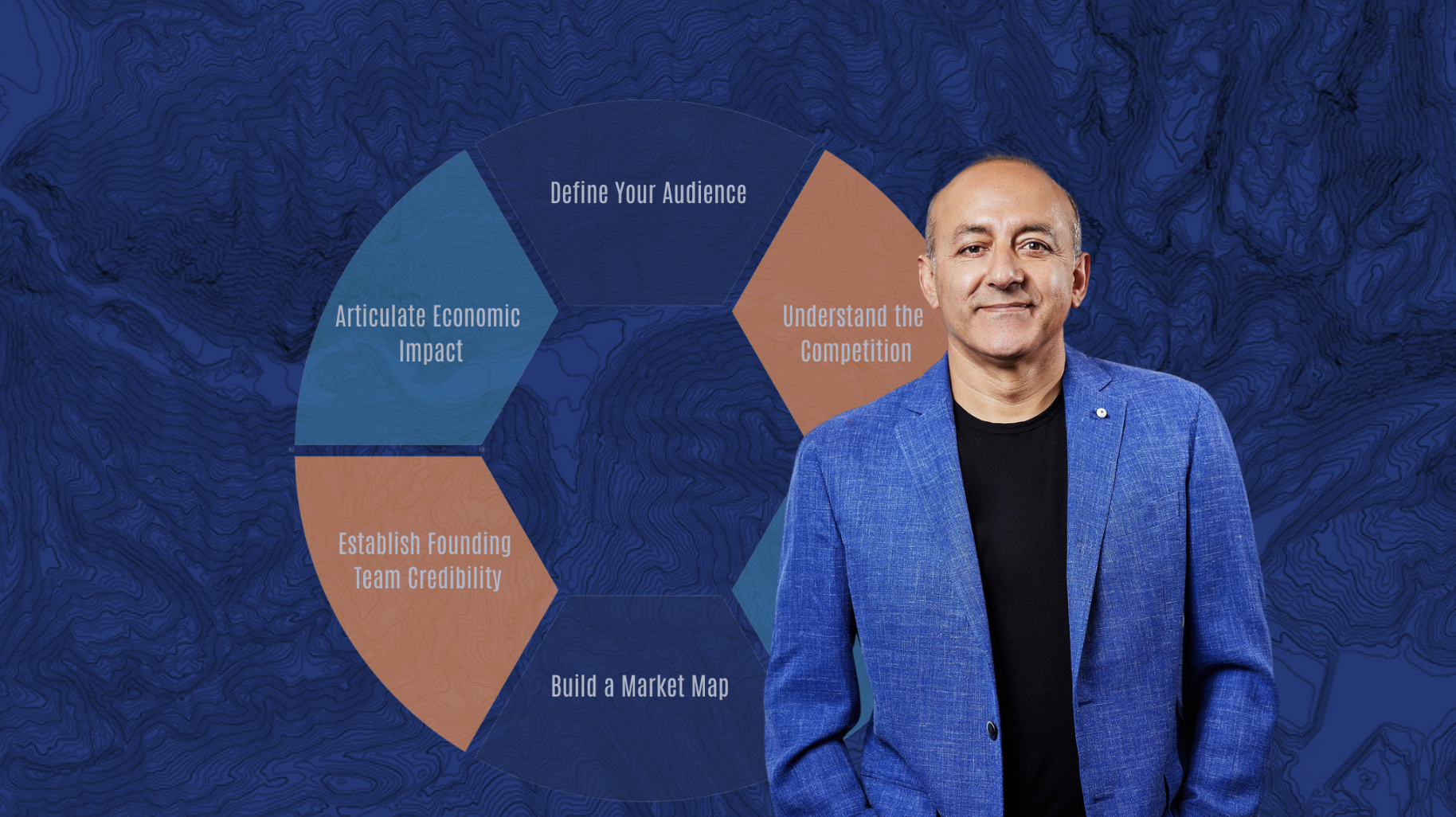How to Start a Customer Advisory Board

As I work with B2B startups across the Sierra Ventures Portfolio on their Go-To-Market and Business Development efforts, I recommend establishing a Customer Advisory Board.
A Customer Advisory Board (CAB) is a steering committee of a company’s customers who meet regularly to share feedback, insights, and advice on topics like product, features, and customer support.
CABs are a great way to get timely feedback from your target power users/supporters and can be foundational on your path to achieving wide-scale Product-Market Fit. A CAB can be structured in a Strategic-Enterprise style or a Community-Based approach.
-
Strategic-Enterprise - companies selling to the enterprise or upper midmarket often create CABs with strategic customers as the members. This approach tends to be more intimate and communication often occurs in person or over video conference. Two of our security portfolio companies, ArmorCode and Dasera, are great examples of how an early-stage tech startup should structure their Strategic-Enterprise CABs.
-
Community-Based - startups that focus on selling to SMBs and/or developers may benefit from casting a wider net. Community-Based CABs are often managed through continuous communication platforms like Slack. Given the wider audience segment for SMBs, it is beneficial to have more members to engage. Our Enterprise Kubernetes Management portfolio company, Spectro Cloud is a great example of how to attract members to your Community-Based CAB via something like your company website.
Here are some guidelines to follow when building and managing a Customer Advisory Board.
When and How to Get Started
Rather than spending months thinking of the perfect way to build your CAB, I recommend starting small and iterating. A good time to start is within the first year of launching the company and after you have:
-
Completed your market diligence
-
Mapped out the initial product features
-
Developed a pipeline of early-adopter customers
Start by informally convening a few potential customers you know through your network or have met during the customer discovery process. Choose people you know will be able to make time to provide trusted feedback on your product development. Use this as a test to validate the format and see if they are the advisors you want to work with long-term. If so, you can formally lock them into the CAB when ready.As part of iterating, your CAB will likely look very different in the first year of your company than it will as your company grows and matures. The advisors at the first iteration may not be there 4 - 5 years later. Over time, you will learn to iterate as you hone in on the CAB member personas, the size of the group, and how frequently you decide to engage.
Who to Recruit
There is no “one size fits all” CAB formation strategy. Factors like your product sector, target customer profile and maturity, and personal preferences and needs can influence your recruiting strategies. I recommend structuring your CAB member personas around your ideal customer profile (ICP). Keep in mind:
-
Their role at the company
-
The size of the company
-
The industry vertical they operate in
For example, suppose you are building next-gen security software to sell to midsize enterprises. In that case, you’ll likely be targeting Chief Information Security Officer (CISOs) and VPs of Security that work for organizations generating between $500M to $5B in revenue. Some traits of successful CAB members include:
-
A passion for tech. Seek advisors who are passionate about technology and are early adopters of next-gen startup solutions. You want members who are facing challenges now that a broader audience will likely face in the future. Certain high-profile tech CXOs may be a great logo on your website, but if they only adopt technologies that are more mature and mainstream, they may not add as much value to the discussions. When you’re going through the nuts and bolts of how your product should be built, you want to hear from the people who are most likely to adopt new technology.
-
Team players. It’s important to take into account how CAB member personalities will mesh during your recurring meetings. The environment should be collaborative and everyone should be comfortable bringing ideas to the table. You want to avoid choosing people who tend to monopolize the conversation, as the ultimate goal is to have everyone from the group contributing in some way every time you meet.
-
Balance of perspective. Construct the group so that you will get multiple viewpoints. You will need to tap into a wide variety of experiences to get the full picture of your customer market. That being said, I do not advise varying the group so much that members will not be compatible. You want to ensure that the group feels like they are among their peers and that they look forward to frequently interacting with each other. For example, it would not be recommended to structure a CAB that includes the following assortment: a F500 CEO, F2000 CIO, Midsize VP of Cloud, and an SMB Head of HR.
It’s also important to note that initially, you may want to steer away from adding your first official customers to the CAB to avoid disrupting your sales efforts. Target the 2nd or 3rd wave of customers for the initial CAB group and go back and add the 1st wave of customers later on.
How to Compensate CAB Members
Compensation for non-customers can be an issue with potential CAB members. There are a lot of opinions on whether to compensate monetarily or incentivize via other means. The key is to be consistent with your decision across the membership group. Non-Monetary Selling your vision and framing why they should spend their limited time on your particular startup is criticalKey points to mention when recruiting CAB members:
-
Exclusivity. You are not asking just anyone to join this group. You are recruiting a selective, hand-picked group of tech experts that can help you solve a unique industry problem.
-
Professional Development. This is an opportunity for CAB members to learn the ins and outs of an emerging technology and how to build a new product in today’s market.
-
Resume Builder. Advisors can promote their involvement and if there is a successful exit, they can say they were an important part of the journey.
-
Peer Networking. Being a CAB member is a chance to build relationships with peers and grow their network. Take the opportunity to showcase who has already joined the board.
MonetaryIf you feel that you have to use monetary compensation to land top-notch advisors, cash is not recommended, as a typical startup is often cash-constrained. Focus on providing advisory option grants instead, which will vest as the advisor provides services and will help keep those advisors invested in making sure your company is successful. DISCLAIMER: Many large customers have prohibitions against their employees taking compensation, in any form, from customers or potential customers. Be very mindful of this as you build your board. Also, you will want to be consistent in your approach.
Keeping the Group Engaged
Engagement starts with setting expectations from the very beginning. When communicating with a potential member about joining, clearly outline the time commitment required, unique perspectives you expect them to bring, and long-term goals of the CAB. Keep in mind, however, that you do not want to make participating seem burdensome. When structured properly, you will likely need an hour or less of their time per month. Once expectations are set and everything has been agreed to, have an onboarding plan. Onboarding can include sending them a nice welcome letter and/or small gift and formally introducing them to the group at the next meeting.Some things to keep in mind for your recurring meetings:
-
Choose a consistent cadence. Most CABs meet on a monthly or bi-monthly basis. Base your meeting frequency around how often you need feedback and feel you can keep members engaged. Whatever you choose, be consistent.
-
Prepare. Send an agenda prior to every conversation to communicate the topics and goals for each session.
-
Determine format. It’s helpful to start with a quick welcome and/or icebreaker and introduce new members. Keep it short and spend the majority of the time going through feedback. Finish with a debrief, recap next steps, and assign any action items as needed.
-
Delegate note-taking. Have someone from the team, other than yourself, dedicated to taking notes. This will ensure that you can focus on the conversation instead of trying to preserve the takeaways.
-
Include relevant team members. Invite different members from your team to attend depending on the meeting topic. For example, if the topic is Sales, include your CRO. If you’re discussing Technology Architecture, invite your CTO.
-
Recap your progress. It’s important to communicate to CAB members how you have incorporated their feedback from previous sessions. This shows that you have listened, that their feedback is not going to waste, and helps highlight the tangible effects of their guidance.
Common meeting topics include:
-
Target Customer Profiles
-
Go-To-Market Strategy
-
Pricing Structure
-
Product Roadmap
-
Technology Architecture
As your group continues to meet, focus on strengthening the relationships among the CAB members by incorporating personal elements as well. You can do this by switching up the normal standing meeting with an informal get-together like a dinner, happy hour, or outdoor activity. This will help you get to know the members better, the members will get to know each other better, and it’s a way to show your gratitude for their support. You will know your engagement strategy is working when your retention rates are high, members continue to show up for the recurring meetings and events, and they become the biggest advocates of your product and long-term vision. If your engagement strategies are successful, you will have the foundation to grow the CAB into something special like our Talent Experience Management Portfolio Company, Phenom, has done with a large industry-leading event like their I Am Phenom conference, a convening that gathers over 1000 Chief Human Resource Officers in addition to the core members of their CAB. If you’re an early-stage company looking to start a Customer Advisory Board feel free to get in touch with me at brendon@sierraventures.com.
Check out more of our Tips for Entrepreneurs and Startups.
See additional Tips about Customer Advisory Boards from Satrix Solutions.
Sources:
-
https://techcrunch.com/2020/07/24/building-your-startups-customer-advisory-board/
-
https://review.firstround.com/start-up-on-the-right-foot-build-a-customer-advisory-board
Subscribe to our news letter to get latest updates and news
- Summary
Recruitment should focus on individuals matching the ideal customer profile, passionate about technology, and capable of collaborative contribution. Compensation might be non-monetary, emphasizing the professional development and networking benefits, or via advisory option grants for more substantial involvement.


